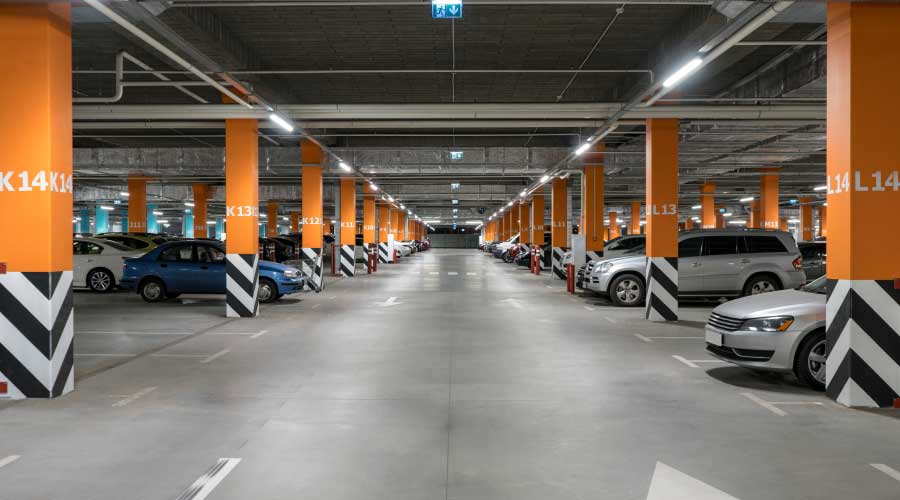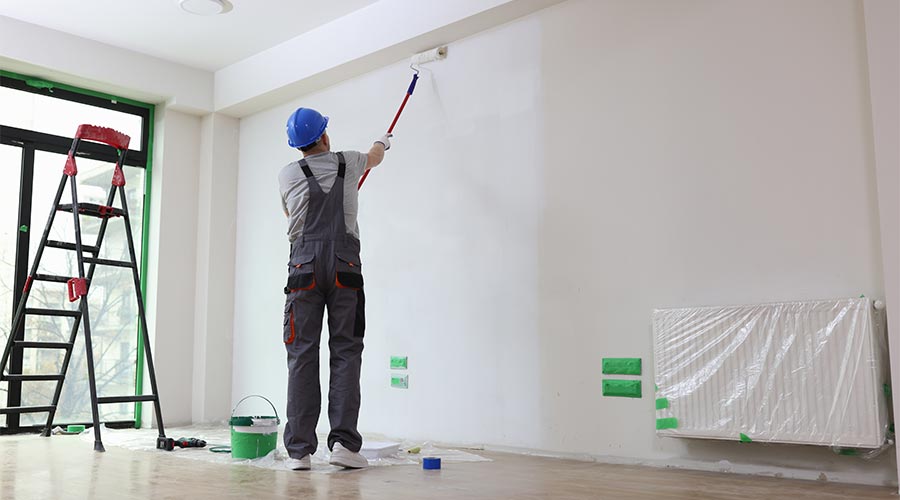Low-VOC Paints Are More Than Just ‘Green’
Advances in paint technology allow facility executives to select environmentally responsible products without sacrificing performance
By Greg Zimmerman, Executive Editor
For facility executives planning an interior painting project, factors such as performance, aesthetic appeal, environmental responsibility and impact on occupant satisfaction all weigh heavily on the selection of the appropriate product. Striking a balance between all these considerations can be challenging, especially because many facility executives perceive that paints that meet their standards in some of these areas do so at the expense of quality in the others. The most notable example: environmentally responsible paints.
“In the past, no one was buying environmentally friendly products because they didn’t work,” says Tony Jager, marketing product manager for PPG’s Pittsburgh Paints division. Ten to 15 years ago, products that were marketed as green in that fledgling niche market were difficult to apply, weren’t able to hide the surface to which they were applied, didn’t stand up to repeated washings and didn’t cover as many square feet per gallon as their non-green counterparts. But these days, as legislative bodies and voluntary programs such as the U.S. Green Building Council’s Leadership in Energy and Environmental Design (LEED) green building rating system are more closely examining paints’ impacts on both the environment and individual buildings’ indoor air quality, the paint industry is slowly being driven to develop more environmentally responsible products that also meet facility executives’ stringent performance standards.
“Advances in paint technology have allowed the creation of formulas that reduce or eliminate VOCs without reducing the durability of the products,” says Steve Renvew, director of marketing for Sherwin Williams.
To facility executives, the most important factor for a paint to be considered environmentally and occupant friendly is that it contains a low amount of volatile organic compounds (VOC) in its solvent. The solvent holds the pigment and resin in solution when paint is applied. As the paint dries, the solvent slowly evaporates into the surrounding air. VOCs, such as benzene, formaldehyde and toluene, are added to the solvents to help the paint dry and cure faster. When VOCs evaporate, they contribute to the formation of smog, are responsible for the objectionable and easily recognizable “new paint smell,” and can be potentially harmful to individuals with certain allergies and other conditions. Some evidence also suggests that VOCs may be carcinogens. Selecting low-VOC paints can bring a major improvement of indoor air quality compared with higher-VOC level paints.
Because of the reduction of health-related risks and the unpleasant odor, low- or no-VOC paints can allow facilities to maintain normal activities during a painting project. This is especially important for schools or hospitals where it would be impractical for occupants to vacate the facility, even if only for a few hours or days.
The amount of VOCs a low-VOC paint can contain is determined by the nature of the paint and its intended use. But because of the way some paints are labeled and marketed, establishing whether paint is truly low-VOC can sometimes be tricky. Many paints say that they contain a maximum 250 grams of VOC per liter of paint, and that could mean anything from 25 to 249, says Mark Petruzzi, vice president of certification for Green Seal, an organization that classifies and certifies low-VOC paints and other environmentally responsible products. “Instead of being labeled ‘low-VOC,’ they are labeled ‘low-odor’ or something else,” says Petruzzi.
Green Seal certifies interior flat paints that contain a maximum of 50 grams of VOCs per liter of paint and interior non-flat paints that contain a maximum 150 grams of VOCs per liter of paint. In addition to the low-VOC requirements, paints must meet other performance-based criteria such as scrubbability or abrasion resistance, hiding power and washability to be eligible for Green Seal certification.
This Green Seal standard (GS-11) is also the baseline used by the USGBC in LEED for its point for low-emitting interior paints. However, to earn the LEED point, paints do not have to be Green Seal certified, they just have to meet GS-11 specifications. LEED is certainly evidence that low-VOC paints and coatings are catching on.
A study of 58 LEED-certified projects published by Environmental Building News in Dec. 2003 showed about 80 percent of the projects certified received credit for low-emitting paints and coatings, making Indoor Environmental Quality credit 4.2 one of the most widely achieved of any LEED credit.
VOC Legislation
Voluntary rating and certification systems like LEED and Green Seal aren’t the only protocols specifying low-VOC paints. In California, a state with some of the most stringent environmental codes, legislation varies by state, and even by county, but many districts limit VOC content to as low as 100 grams per liter for flat paints and 150 grams per liter for non-flat paints.
Additionally, legislation recommended by the Ozone Transport Commission (OTC), based on standards spelled out by the California Air Resources Board, is being considered that would mandate low-VOC levels in 13 eastern states from Virginia to Maine similar to those in many California districts. The OTC is an organization created by Congress aiming to reduce air pollution and ground-level ozone.
This proposed legislation, pending the approval of each state, would go into effect on Jan. 1, 2005. The legislation is almost certainly going to pass, says Jeff Spillane, senior marketing manager for Benjamin Moore, meaning that facility executives in those states will need to take a close look at the paints with which they have become familiar and ascertain whether they fit into the framework of the new law.
Because of this new legislation and the ever-growing popularity of LEED, paint manufacturers now scoff at the notion that environmentally responsible paint is a niche market. Most major paint manufacturers now include a low-VOC line, marketed as such, in their arsenal of products. The mere fact that the manufacturers market the paints as low-VOC is testament to the improvement of performance of the paints themselves. In the past, because of skepticism by consumers in general and facility executives specifically, manufacturers were hesitant to market an environmentally friendly paint because of the perceived drop in quality.
Technology Issues
The slowness of the shift to high-performance, low-VOC paints is not a result of lack of effort, say paint manufacturers. Rather it’s a result of the technology available being slightly behind the demand of the market. “The best chemist in the world only has certain things to work with,” says Spillane. “New products are going to come out of development of new raw materials. It’s a technology issue.” The paint industry is a very mature industry and, as such, paint is made today the same basic way it was 30 to 40 years ago, says Spillane. New paints are usually the result of the substitution of a new ingredient for an old one to improve the entire paint formulation.
One of the few downsides to high-performance, low-VOC paints is that they are usually premium products that can carry a higher price tag. But, if the paint is durable, the price tag of the paint itself is not always the most crucial financial factor of the total cost of a job. “The lowest cost component of a good paint job is the paint itself,” says Dave Maurer, director of exterior and specialty products for ICI Paints. Selecting a high-performance paint may be the difference between painting once and painting four or five times in 20 years.
It’s also important to be aware that low-VOCs paints can take longer to dry and cure. Because much of the VOC-containing drying and curing agents are removed, low-VOC paints are sometimes referred to as self-coalescing, meaning that they take longer to form a cohesive film.
Overall, though, the market has come a long way. “There’s never been a better time to buy environmentally responsible products,” says Petruzzi. “It’s a lot easier to be green now. If you’ve tried green in the past, give it a fresh look. It can lead to happier and more productive workers and occupants.”
Related Topics:











